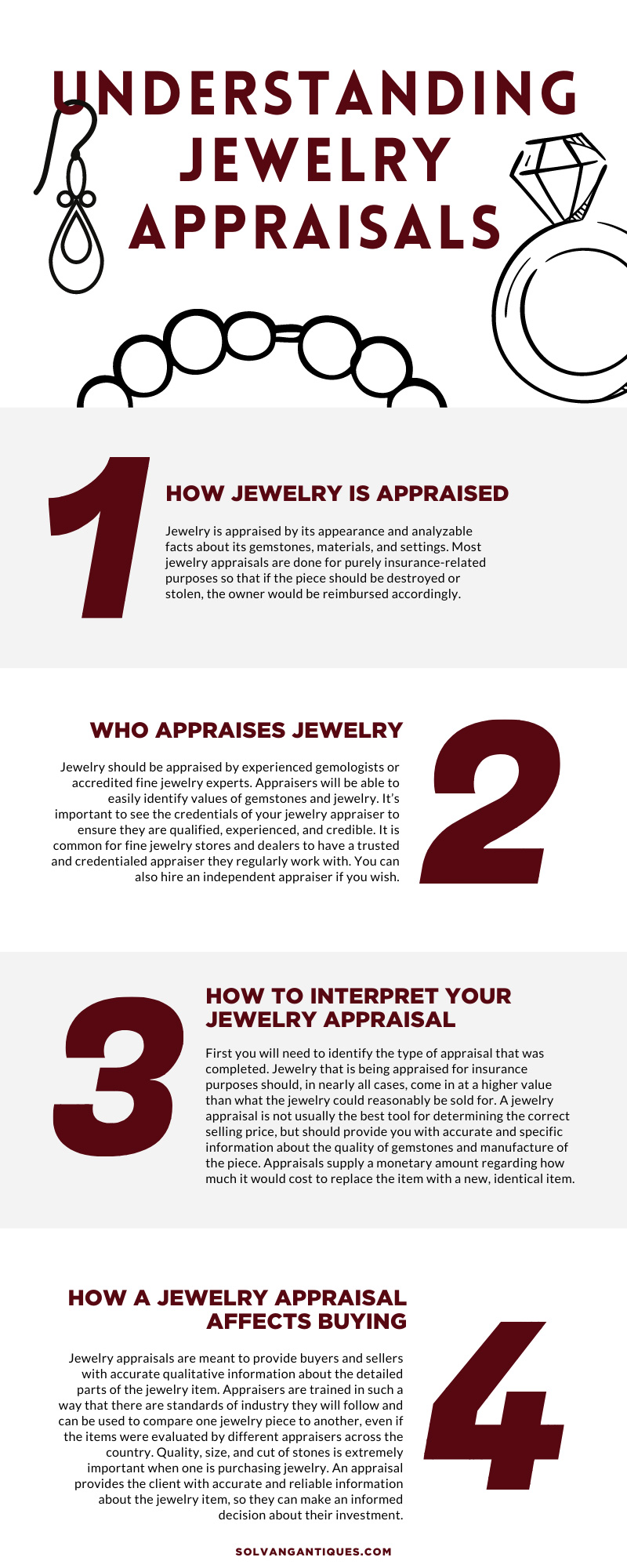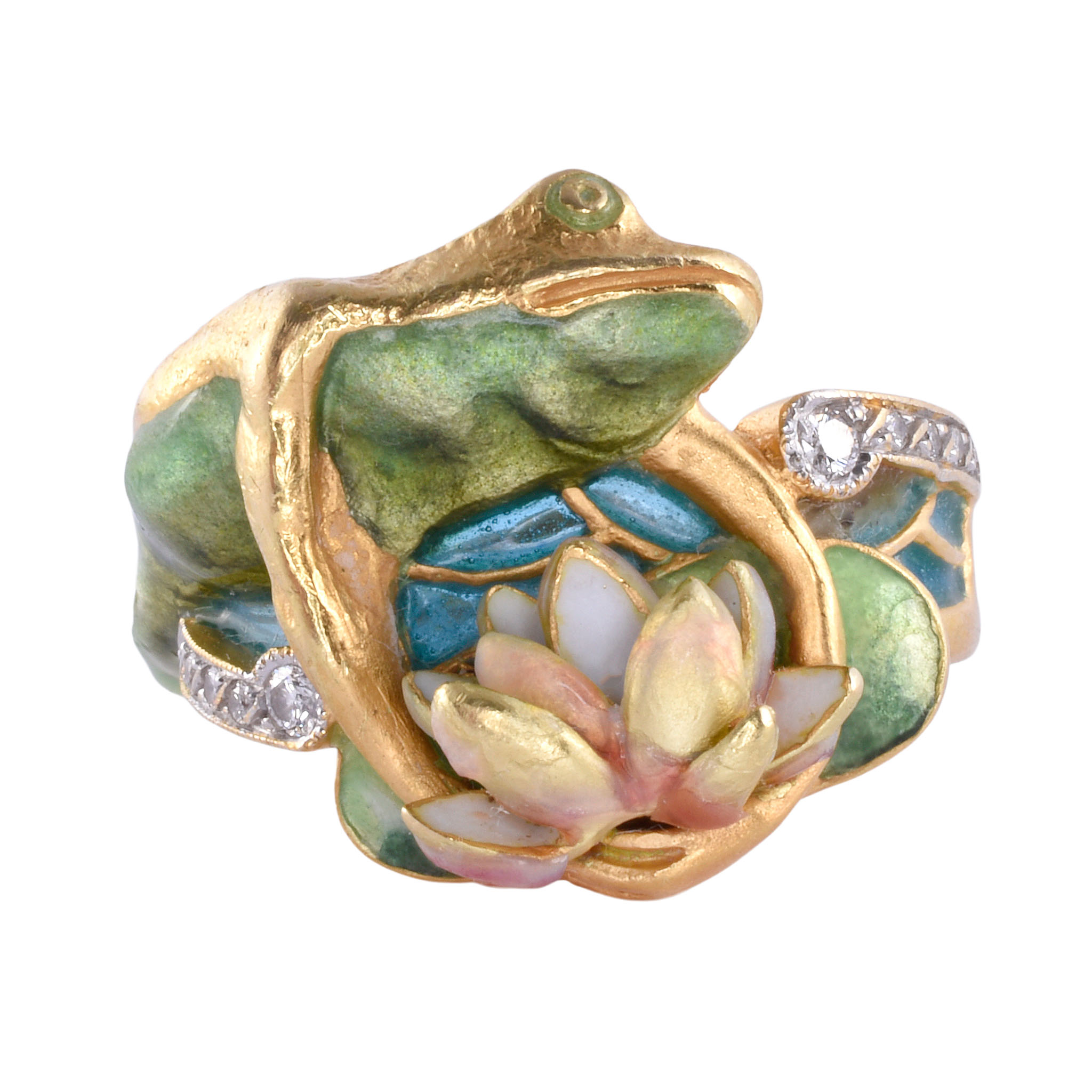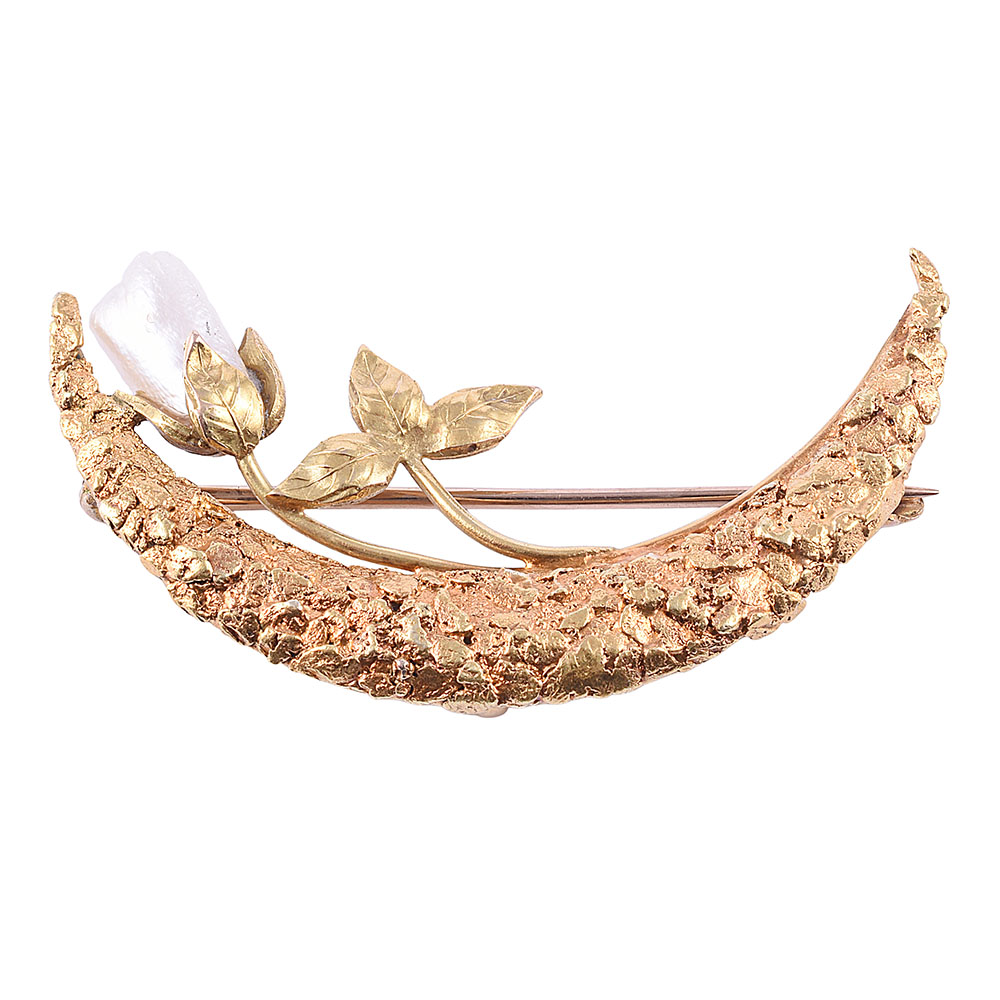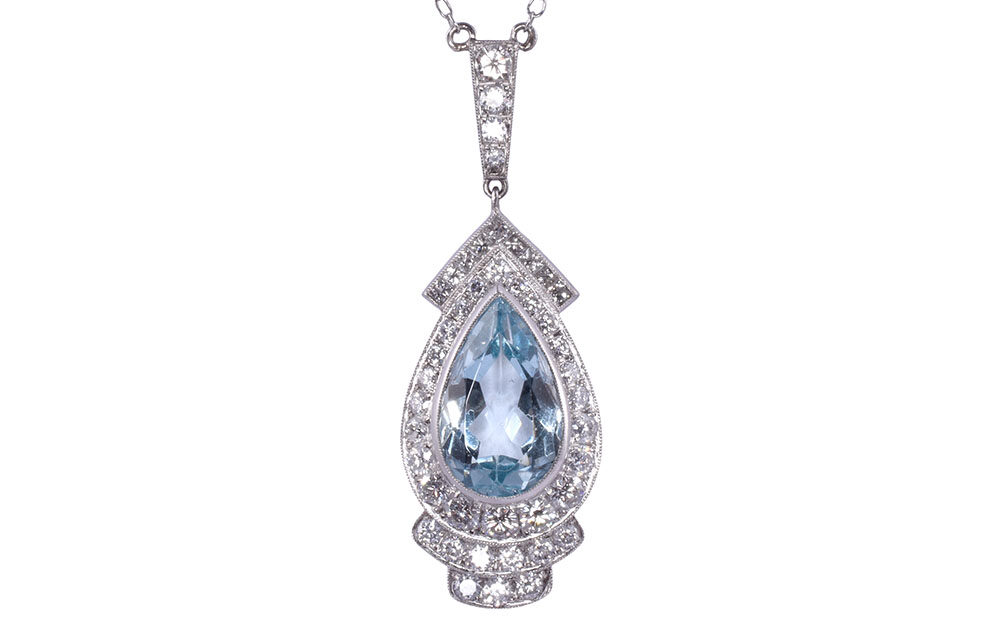Understanding Jewelry Appraisals
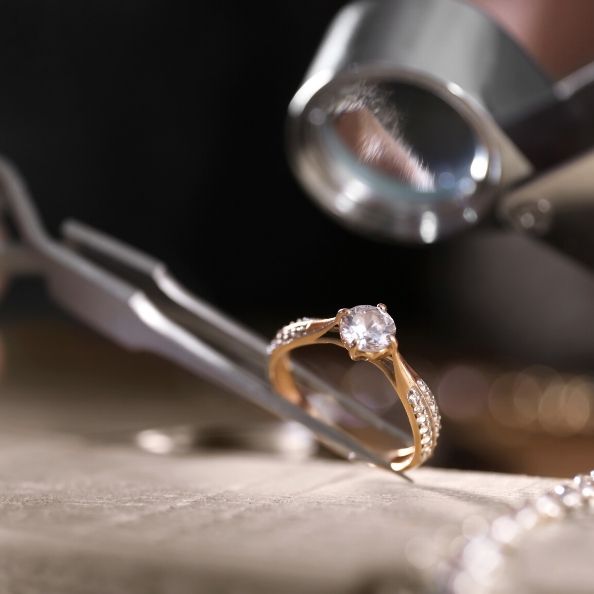

Jewelry appraisals aim to communicate how much the exact piece of jewelry is worth. It takes many things into account so that you have the best representation of the value of an item prior to selling or purchasing it. Appraisals are of benefit to both jewelry dealer or seller and jewelry buyer. It gives an accurate estimate of what a piece is worth so neither seller nor buyer gets a bad deal on the sale. Jewelry appraisals are not typically the exact price paid in a sale of the jewelry piece, but a number to provide safety in insurance. Learn more about the process and how to interpret the appraisal of your jewelry or the jewelry you are looking to buy with this guide to understanding jewelry appraisals.
How jewelry is appraised
Jewelry is appraised by its appearance and analyzable facts about its gemstones, materials, and settings. Most jewelry appraisals are done for purely insurance-related purposes so that if the piece should be destroyed or stolen, the owner would be reimbursed accordingly. Appraisals take a look at the quality of the material, what material is used, desirability of the shape and cut of the stone or material, type of gemstones, if any, clarity, color, cut, and carat. Other common reasons jewelry is appraised, aside from insurance purposes, include estate tax evaluations, value comparisons, and marketing.
Each piece getting appraised is carefully examined, and the total value of its parts are summed up in whole. There are a few different types of appraisals.
Fair market value
Fair market value appraisals refer to the amount a piece should realistically and fairly be sold for. These are typically completed between a buyer and a seller when landing on a fair price becomes an issue. They are also used for charitable donations and estate appraisals. These types of appraisals are often lower than the replacement value for a similar item, as the jewelry piece is given a specific value based on its worth and current condition.
Insurance appraisals
Jewelry appraisals for insurance are the most common and usually the highest-valued appraisals. These are normally requested by the jewelry owners, whether this means a private person or a jewelry dealer. This type of jewelry appraisal takes the greatest amount of information into account and gives an accurate replacement value. These are done most often to protect the owner in the case of damage, loss, or theft of the item. Insurance appraisals do not accurately reflect what the jewelry piece should sell for but rather reflect the cost of replacing the item with a similar or identical new one.
Who appraises jewelry
Jewelry should be appraised by experienced gemologists or accredited fine jewelry experts. Appraisers will be able to easily identify values of gemstones and jewelry. It’s important to see the credentials of your jewelry appraiser to ensure they are qualified, experienced, and credible. It is common for fine jewelry stores and dealers to have a trusted and credentialed appraiser they regularly work with. You can also hire an independent appraiser if you wish. What to look for in a jewelry appraiser is experience, completion of jewelry appraisal courses, and a few certifications. Jewelry appraisers should be certified appraisers and certified gemologists. These certifications tell you that they know what they’re doing and what they’re looking at when appraising your jewelry. It is also a good sign if the appraiser is a part of a professional association, such as the National Association of Jewelry Appraisers or the American Gem Society.
How to interpret your jewelry appraisal
First you will need to identify the type of appraisal that was completed. This is important so that you know what to expect from the final number. Jewelry that is being appraised for insurance purposes should, in nearly all cases, come in at a higher value than what the jewelry could reasonably be sold for. Understanding the purpose of the jewelry appraisal will help you greatly in understanding what the number means. A jewelry appraisal is not usually the best tool for determining the correct selling price, but it should provide you with accurate and specific information about the quality of gemstones and manufacture of the piece. Appraisals supply a monetary amount regarding how much it would cost to replace the item with a new, identical item. If you have any questions about the appraisal, ask the appraiser, or a certified gemologist. They will have the in-depth knowledge to answer the questions you have.
How a jewelry appraisal affects buying
Jewelry appraisals are meant to provide buyers and sellers with accurate qualitative information about the detailed parts of the jewelry item. Appraisers are trained in such a way that there are industry standards they will follow and that can be used to compare one jewelry piece to another, even if the items were evaluated by different appraisers across the country. Quality, size, and cut of stones is extremely important when one is purchasing jewelry. An appraisal provides the client with accurate and reliable information about the jewelry item, so they can make an informed decision about their investment.
The appraisal stays with the item and will be required by your insurance company for accurate coverage. Most appraisals are written as insurance appraisals. To be sure it is accurate and aboveboard, check that the appraiser is trained and accredited, not just a jewelry retailer. It is also advised that the appraiser used to evaluate the item is not affiliated with the one selling the jewelry, as you want to ensure they are not providing more favorable results benefitting the jewelry’s seller.
To buy antique fine jewelry from a dealer you can trust, check out our selection of antique, vintage, and estate jewelry and watches. Solvang Antiques strives to provide you with luxury items at fair prices.
